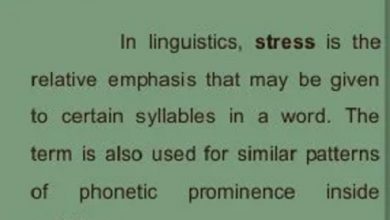Six Manners of Articulation With description
Manners of Articulation
In articulatory phonetics, the form of articulation is the configuration and interaction of the articulators (speech organs such as the tongue, lips, and palate) when emitting a speech sound. A parameter of the road is the limitation, that is how close the speech organs come together. Others include those involved in r-like sounds (thumping and vibrations) and the squeak of fricatives. We are defining here the Manners of Articulation.
The concept of manner is mainly used in the discussion of consonants, although the movement of articulators will also greatly alter the resonance properties of the speech channel, changing the shaping structure of speech sounds, which is crucial for vowel identification. For consonants, the place of articulation and the degree of phonation of the voice are considered separate from the manner, as independent parameters. Homorganic consonants, which have the same place of articulation, can have different forms of articulation. Nasality and laterality are often included in the manner, but some phoneticians, such as Peter Ladefoged, consider them independent.
These are the different forms of articulation:
Six Manners of Articulation With description
1-Plosives / stops
With plosives, the speech organs are closed, and the mouth and nasal cavities are completely closed, blocking the airflow. The pressure that builds up in the oral cavity is released suddenly. The audible flow of air that is released is called aspiration. The registers in the English language are / p /, / t /, / k / (without voice) and // b /, / d /, / g / (with voice).
2-Affricates
As with the stops, there is a complete blockage of the airflow in the oral cavity. But unlike such stops, the blocked airflow is not released suddenly, but slowly causes audible friction. The affricates can therefore be divided into two parts: a stop followed by a fricative (since there are closure and friction in the same place). But note that affricates are always parsed as one phoneme. English affricates are / tʃ / (without voice) as in cheese and / dʒ / (with voice) as in the jungle. Six Manners of Articulation With a description
3-Nasal
With nasal sounds, the veil (soft palate) is lowered, blocking the oral cavity. Air can only escape through the nose. The nasals in English are / m /, / n / and / ŋ / as in singing, all of which are voiced.
4-Fricatives
Fricatives are created when air moves at a constant speed through a narrow space between two articulators. They can be divided into two categories: closing fricatives and closing fricatives. In slit fricatives, the tongue is fairly flat (as in / f /, / θ / as in ding (voiceless), / v /, / ð / as in this (voiced)) while in groove fricatives the front of the tongue has the eponymous groove (/ s / as in seal, / ʃ / as in shock (without voice), / z / as in zero, / ʒ / as in measure (expressed)).
5-Lateral
The tip of the tongue is pressed to the alveolar rim. The edges of the tongue are lowered so that air escapes over the edges of the lower tongue. The only side sound in English is / l / (voiced).
6-Approximate
The approximate name refers to the fact that the involved articulators come closer together without actually touching each other. There are three approaches in the English language: / j / as in you, / w / as in us, and / r / as rising (all expressed). The approximations are often referred to as semivowels (or sliders) because they represent the “twilight zone” between consonants and vowels.


